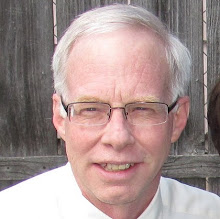Trip to Africa provides perspective on life
Trip to Africa provides perspective on life
During the day, the light reveals the emptiness surrounding you on all sides -- fields stretching for miles, vastness spilling toward a horizon broken only by a few shrubs or palm trees and this enormous blue sky hanging over it all.
Multimedia: Journey to Africa
Looking out over all that empty land, it feels like the sky is sucking you up -- like you're drowning up into the blue. When the sun sets about 5:30 each evening, you can see the colors painted across the sky, like the horizon is one 360-degree canvas. The sun becomes a big,
almost tangible ball, slipping below the land as the space over it turns pink, then orange, then purple, blue and black.
At night, the sky is covered by so many stars that you feel you're in the middle of them, suspended in space. The Milky Way is scattered across the night like tiny freckles, and the Southern Cross hangs above everything in its perfect, calm order, like a compass twinkling in mid-air.
Something about that sky was humbling. Its sheer magnitude made me feel tiny, and every time I looked up at it during my stay in Africa, I was reminded of just how huge the whole world really is and how much about it still needs to be fixed.
That was what I, two other students and one professor were trying to do during our two weeks in Africa last month, -- joining in the global fight against HIV/AIDS.
Various Elon University students and faculty members have been working on the problem of HIV/AIDS in Namibia since 2003, when a group of students from the class of 2006 decided to tackle the issue through the support of Project Pericles, a nonprofit organization advocating social responsibility and civic action in higher education.
Namibia's overall rate of HIV infection is currently about 20 percent and stagnant, but the rate of HIV infection in the town of Oshakati is 40 percent, meaning that two out of five people in the region are HIV-positive.
Erin Barnett, a broadcast communications major and my college roommate for two years, was the first to get involved. Last fall, she took a class with Dr. Tom Arcaro, a sociology professor and Elon's director of Project Pericles.
In November, she and Tom had begun discussing the idea of Erin producing a video documentary about Anita Isaacs, a passionate AIDS activist who is HIV-positive herself. Telling her story could help spread awareness about the HIV problem in Namibia on a grander scale.
Erin suggested bringing Conor Britain, a good friend and fellow broadcast communications major, to help film. I came on board later when Tom realized he wanted to bring a writer along, too. My role would be to interview Isaacs and piece together her written autobiography to accompany Erin's video biography.
Our journey to Namibia took more than 30 hours of total travel time, including three flights on two different airlines. On the morning of Tuesday, May 15, we flew from Raleigh to Atlanta, then from Atlanta to Dakar, Senegal, and finally, from Dakar to Johannesburg, South Africa.
The next morning, we flew on South African Air from Johannesburg to Windhoek, the capital of Namibia, and then finally, after one night in the city, we drove seven hours north to Oshakati, the small town where Anita Isaacs lives.
We stayed at the Okatana Catholic Mission during our two weeks in Oshakati, living in two small rooms with Afghan-style blankets on the beds and crucifixes on all the shelves. The mission was quiet, inhabited by a few priests and nuns, a pair of mangy brown dogs and a Peace Corps volunteer from Miami named Angie.
Arriving in Oshakati was a bit of a shock after spending time in the big cities of Johannesburg and Windhoek. Both of these cities, the capitals of South Africa and Namibia, respectively, seemed as urban and fast-paced as any American city. Pizza parlors, department stores and skyscrapers line the streets, standing in stark contrast to the poverty and barrenness of Oshakati.
The town of Oshakati is centered around a huge outdoor market almost a mile long. Every morning, local vendors trickle into the market as the sun rises to set up their merchandise and sit in front of their stalls that day.
The smells of spices and small fires half buried in the sand fill the air during these busy mornings, and echoing throughout all of the cramped stalls are the sounds of voices chattering in Oshivambo, the language of the Ovambo tribe, which populates most of northern Namibia.
During my first day in the market, we spent nearly an hour walking through the sand under the hot sun, in front of rows of big, woven baskets full of seeds, nuts, withered raw fish, wheat, grains and dried centipedes, a local delicacy. We passed stands selling sunglasses, watches, grapes and perfumes, all covered in flies, and when we walked through the meat section of the market, in the shaded center, I saw the head of a bull on the ground, horns still attached, with flies buzzing around its gory neck.
Vendors sat on green and white plastic patio chairs, Coke crates or cardboard beer boxes, talking and drinking Windhoek Lager and patiently awaiting customers. No one hassled or heckled visitors in the market. It was all a simple waiting game.
Namibia is the second least densely populated area in the world, and the rural landscapes of Oshakati reflect this fact everywhere you look. A main highway cuts through the center of town, and a cluster of strip-mall shops, grocery stores and Internet cafes is near the big market, but the houses reveal the area's true poverty.
Most of the houses are tiny shacks made of sheet metal and clay bricks or tall sticks tied with wire. Thatched roofs, dirt floors and broken, plastic lawn chairs are all common sights around the small neighborhoods in the town, and hundreds of brown speckled cattle roam the streets freely.
Most of the families residing in the outskirts of the town live on traditional homestead farms. A homestead is made up of a large group of extended family members and friends gathered on one piece of land, living in one-room, wooden huts with stick-and-wire fences around the perimeter of the homes. Chicken coops, cow pens and hog cages are separate structures within the perimeter, and the group "living room" might consist of a table and a few plastic chairs under a large, old tree inside the fenced area.
Mahangu fields surround the entire complex and provide everything the family needs. Mahangu is the staple crop of the region and looks like a cross between corn and wheat with its tall, tan stalks rustling in the fields.
Farmers in Oshakati harvest mahangu by cutting it, letting it dry in the sun for days, thrashing the stalks with sticks and grinding the ears into a fine powder by pounding them with logs.
The mahangu powder can then be cooked into Omalodu, a fermented drink commonly referred to as "Ovambo Beer," or mahangu porridge, a thick, gray food eaten at nearly every meal.
When we went to the homesteads in the bush, every family we visited served us Omalodu, mahangu porridge and a freshly slaughtered chicken, pig or duck.
We ate the traditional Ovambo way: grabbing a chunk of mahangu porridge out of the community basket on the table, sticking it to the tips of our fingers, dipping it into the juices and sauces of the family's chicken bowl and licking it off of our fingertips.
Anita usually led us around Oshakati during the day, introducing us to different government figures and old friends. Because Anita's story was the focus of our project, we spent a good deal of our time interviewing Anita herself. We filmed interviews with Anita all over town: at her house, in the market and even in our rental truck.
Despite the prevalence of HIV/AIDS in the area, the problem exposed itself in subtle ways. We often heard public-service announcements on the radio urging people to use condoms. The local newspaper, The Namibian, frequently had headlines concerning HIV/AIDS.
But one of the scariest and most tragic aspects of HIV is the fact that it is, for the most part, invisible. No matter how often it occurred, I still felt shocked every time Anita would tell us that the person we just met had HIV.
The hardest things to see in Oshakati were the children who were either HIV-positive or orphaned by parents who died of AIDS. Many were both. At a meeting of a support group at Anita's office, I met dozens of AIDS orphans. Children of all ages were seated on benches in the courtyard, eating candy and drinking from juice boxes. It could have been an American school recess, only these children didn't laugh or play. They didn't fuss or complain or get up to playfully chase each other around their seats. They simply sat on their benches quietly, staring at everyone with wide eyes and occasional shy smiles.
On one of our last nights in the country, we took Anita to spend the night in Etosha, a large national game preserve a few hours south of Oshakati. What we found in Etosha was the Africa you see on the Discovery Channel: a Serengeti-like landscape populated by zebra, giraffes, wildebeests, elephants, warthogs and more.
We saw huge herds of springboks -- tan and skinny hooved animals that bend their heads around backward to scratch themselves with their horns -- and even a family of ostriches, bobbing their long, tube-like necks as they walked.
The bungalow where we stayed was in an old German fort near a big watering hole where we saw kudu, oryx and jackals come for drinks and, just as the sun was setting, where we watched an old, lone elephant take a bath.
Moments like that -- when I could watch a wild elephant clean itself in the middle of Africa under that big, beautiful sun -- left me speechless. As humbling as that huge, sun-streaked sky was on nights like that, every time I looked up at it, I felt inspired. Each time I felt my eyes drawn up to it, I remembered that I may be only one person, tiny and weak compared to the vastness of the world around me, but one person can make a difference.
During my two weeks in Africa, I saw herds of wild giraffes roaming across the side of the road and six-foot anthills towering between huge stalks of grass. I saw men carving beautiful wooden statues by hand and baboons running across the highway.
But the truth is, when I think about Africa years from now, what I will remember best will be the colors of the sunset in Etosha and the way the stars looked sprinkled on the black over the mahangu fields. I will remember how I felt under the African sky. Alyse Knorr is a rising junior at Elon with a double major in English and journalism.






No comments:
Post a Comment